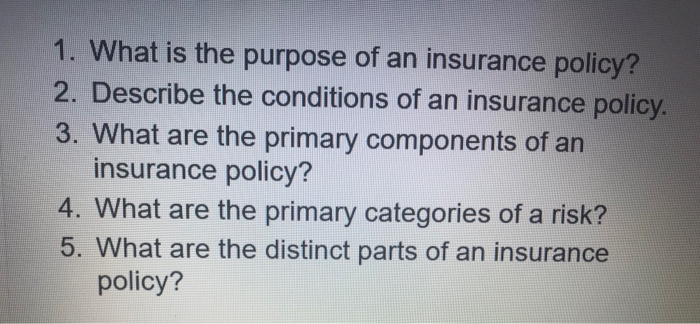Fascination About Pacific Prime
Table of ContentsNot known Details About Pacific Prime Excitement About Pacific PrimeNot known Incorrect Statements About Pacific Prime A Biased View of Pacific PrimeThings about Pacific Prime

This is due to the fact that the data were accumulated for a period of strong financial performance. Of the approximated 42 million individuals that were uninsured, just about regarding 420,000 (regarding 1 percent) were under 65 years old, the age at which most Americans end up being qualified for Medicare; 32 million were adults between ages 18 and 65, around 19 percent of all adults in this age group; and 10 million were youngsters under 18 years old, regarding 13.9 percent of all kids (Mills, 2000).
These quotes of the variety of individuals uninsured are generated from the annual March Supplement to the Existing Populace Study (CPS), conducted by the Demographics Bureau. Unless otherwise kept in mind, nationwide quotes of people without health insurance and percentages of the population with various kinds of insurance coverage are based upon the CPS, the most widely made use of resource of estimates of insurance policy protection and uninsurance rates.
Get This Report about Pacific Prime
:max_bytes(150000):strip_icc()/how-does-insurance-sector-work.asp-FINAL-1ccff64db9f84b479921c47c008b08c6.png)
Still, the CPS is specifically valuable since it creates annual estimates reasonably promptly, reporting the previous year's insurance policy protection estimates each September, and because it is the basis for a consistent set of estimates for more than two decades, permitting analysis of fads in insurance coverage gradually. For these factors, along with the substantial usage of the CPS in various other research studies of insurance policy protection that exist in this record, we depend on CPS quotes, with limitations noted.

The price quote of the number of without insurance individuals expands when a populace's insurance coverage standing is tracked for a number of years. Over a three-year duration beginning early in 1993, 72 million individuals, 29 percent of the U.S. https://www.intensedebate.com/profiles/pacificpr1me. populace, lacked protection for at the very least one month. Within a single year (1994 ), 53 million people experienced a minimum of a month without protection (Bennefield, 1998a)
6 out of every ten without insurance grownups are themselves utilized. Working does boost the likelihood that one and one's household members will have insurance coverage, it is not an assurance. Also participants of households with two full time breadwinner have practically a one-in-ten possibility of being without insurance (9.1 percent without insurance rate) (Hoffman and Pohl, 2000).
The Ultimate Guide To Pacific Prime
New immigrants account for a significant proportion of people without wellness insurance. One evaluation has actually attributed a considerable section of click site the current growth in the size of the U.S. without insurance populace to immigrants who arrived in the country between 1994 and 1998 (Camarota and Edwards, 2000). Recent immigrants (those that involved the USA within the past four years) do have a high price of being without insurance (46 percent), yet they and their children represent just 6 percent of those without insurance policy across the country (Holahan et al., 2001).
The relationship in between medical insurance and access to care is well developed, as recorded later in this chapter. Although the relationship between medical insurance and health and wellness results is neither direct nor straightforward, an extensive professional and health and wellness solutions research study literature web links medical insurance coverage to improved access to care, much better top quality, and boosted individual and populace health condition.
Degrees of analysis for checking out the impacts of uninsurance. It focuses particularly on those without any health and wellness insurance for any type of size of time.
How Pacific Prime can Save You Time, Stress, and Money.
The issues encountered by the underinsured remain in some aspects similar to those dealt with by the without insurance, although they are generally less severe. global health insurance. Uninsurance and underinsurance, nonetheless, entail clearly various policy problems, and the techniques for addressing them may differ. Throughout this study and the five reports to follow, the main emphasis is on individuals with no medical insurance and hence no aid in paying for health care beyond what is readily available through charity and safeguard organizations
Wellness insurance policy is an effective factor affecting receipt of care due to the fact that both individuals and physicians respond to the out-of-pocket price of services - https://issuu.com/pacificpr1me. Wellness insurance policy, however, is neither necessary nor sufficient to get to clinical services. The independent and direct effect of wellness insurance policy coverage on access to wellness solutions is well established.
Others will certainly acquire the healthcare they need even without health insurance coverage, by paying for it expense or seeking it from carriers who supply care free or at extremely subsidized prices. For still others, medical insurance alone does not guarantee invoice of care due to the fact that of other nonfinancial obstacles, such as a lack of healthcare companies in their area, limited accessibility to transport, illiteracy, or linguistic and cultural distinctions.
All About Pacific Prime
Formal research study concerning without insurance populations in the United States dates to the late 1920s and very early 1930s when the Committee on the Price of Medical Care created a collection of records about financing medical professional office check outs and hospital stays. This concern came to be significant as the varieties of medically indigent climbed during the Great Clinical depression.